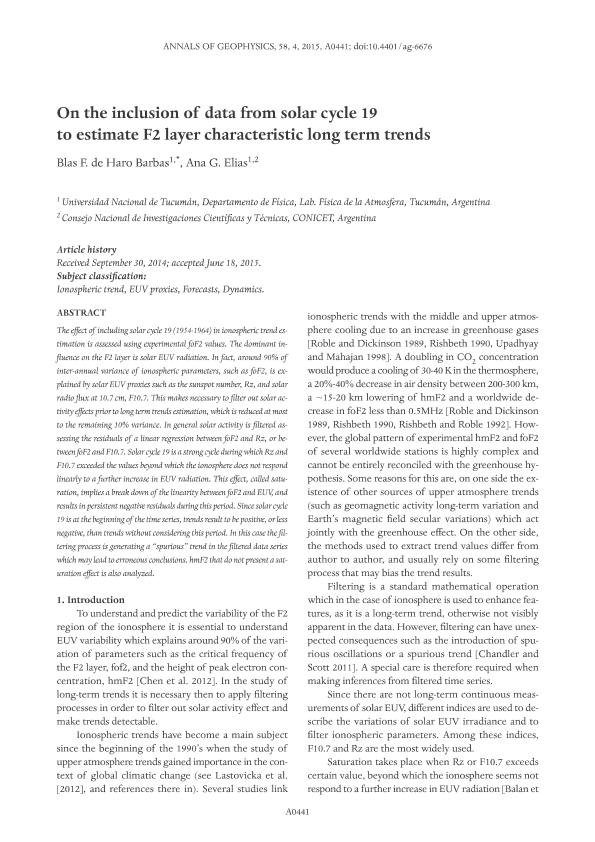Artículo
On the inclusion of data from solar cycle 19 to estimate F2 layer characteristic long term trend
Fecha de publicación:
04/2015
Editorial:
Editrice Compositori Bologna
Revista:
Annals Of Geophysics
ISSN:
1593-5213
e-ISSN:
2037-416X
Idioma:
Inglés
Tipo de recurso:
Artículo publicado
Clasificación temática:
Resumen
The effect of including solar cycle 19 (1954-1964) in ionospheric trend estimation is assessed using experimental foF2 values. The dominant influenceon the F2 layer is solar EUV radiation. In fact, around 90% of inter-annual variance of ionospheric parameters, such as foF2, is explained by solar EUV proxies such as the sunspot number, Rz, and solar radio flux at 10.7 cm, F10.7. This makes necessary to filter out solar activity effects prior to long term trends estimation, which is reduced at most to the remaining 10% variance. In general solar activity is filtered assessing the residuals of a linear regression between foF2 and Rz, or between foF2 and F10.7. Solar cycle 19 is a strong cycle during which Rz and F10.7 exceeded the values beyond which the ionosphere does not respond linearly to a further increase in EUV radiation. This effect, called saturation, implies a break down of the linearity between foF2 and EUV, and results in persistent negative residuals during this period. Since solar cycle 19 is at the beginning of the time series, trends result to be positive, or less negative, than trends without considering this period. In this case the filtering process is generating a ?spurious? trend in the filtered data series which may lead to erroneous conclusions. hmF2 that do not present a saturation effect is also analyzed.
Palabras clave:
Ionospheric Trends
,
Euv Proxies
,
Solar Cycle
,
F2 Region
Archivos asociados
Licencia
Identificadores
Colecciones
Articulos(CCT - NOA SUR)
Articulos de CTRO.CIENTIFICO TECNOL.CONICET - NOA SUR
Articulos de CTRO.CIENTIFICO TECNOL.CONICET - NOA SUR
Citación
de Haro Barbás, Blas Federico; Elias, Ana Georgina; On the inclusion of data from solar cycle 19 to estimate F2 layer characteristic long term trend; Editrice Compositori Bologna; Annals Of Geophysics; 58; 4; 4-2015; 1-6
Compartir
Altmétricas




